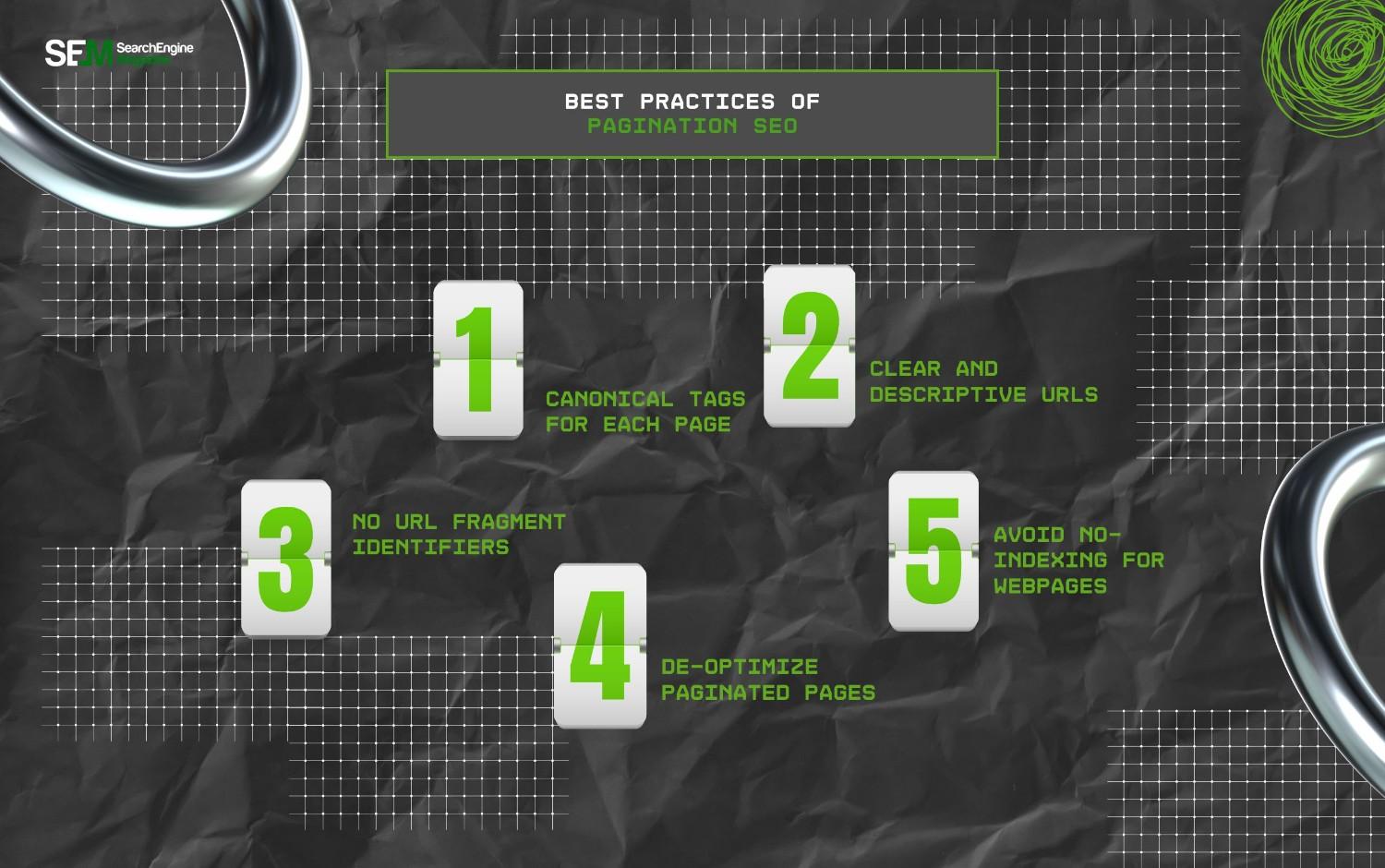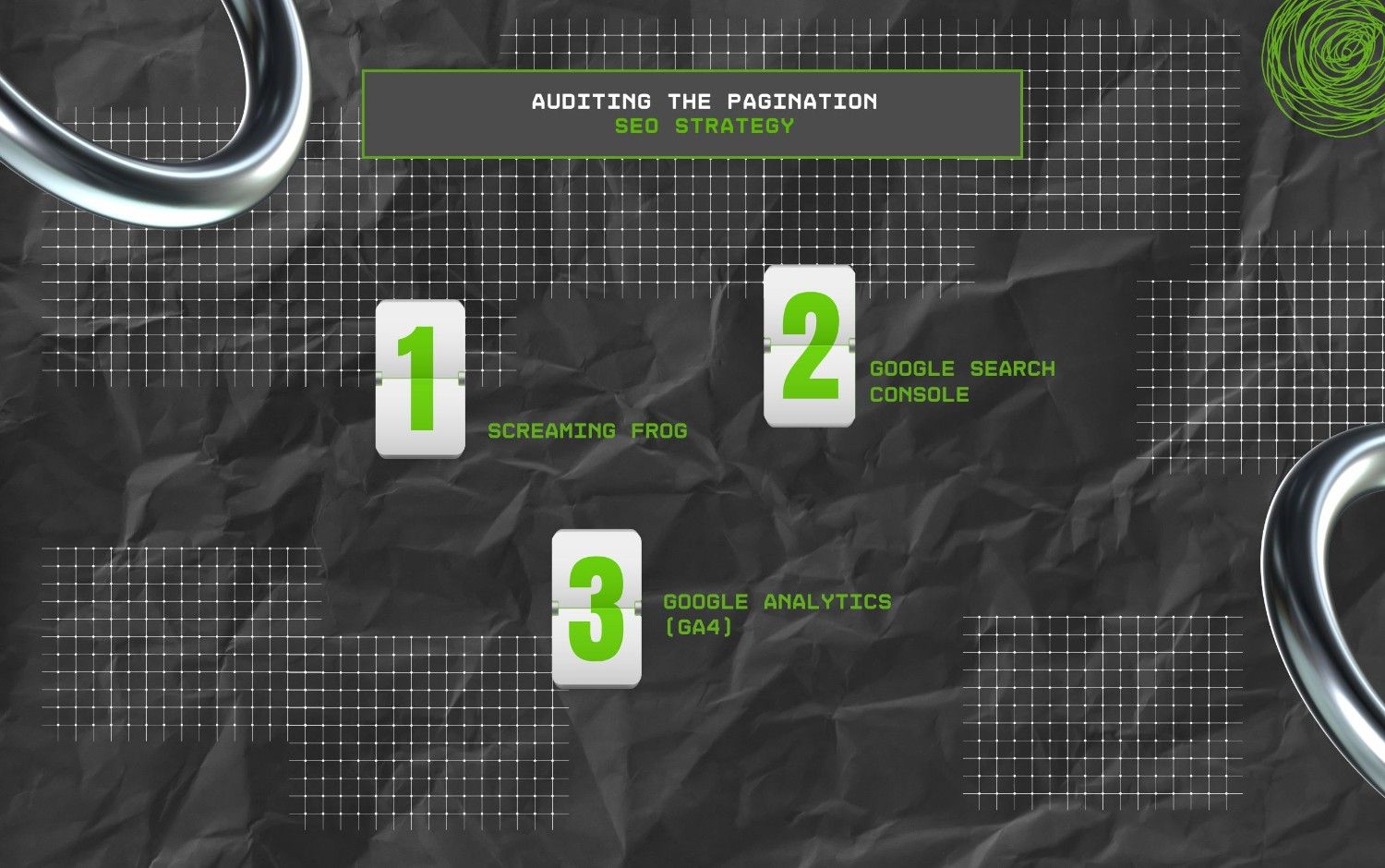Pagination SEO: How To Boost Indexation And User Experience?
Nov 17, 2025

Nov 17, 2025

Nov 17, 2025

Nov 14, 2025

Nov 13, 2025

Nov 13, 2025

Nov 07, 2025

Nov 07, 2025

Nov 06, 2025
Sorry, but nothing matched your search "". Please try again with some different keywords.


A website cannot have all of its information on one single page. That makes the design chaotic and messy. So, sites have multiple webpages, where each is dedicated to a specific type of information.
This not only makes navigation easier, but also gives a structure to the website. Allowing both users and search engine bots to understand the contexts.
And, this is beneficial in countless ways. For instance, the bots can easily index the pages. That is, presenting them on SERPs when there is a related search query.
So, it helps in improving the user experience and Google rankings.
That’s why pagination is integral to any SEO strategy. That is, with it, sites can streamline the diverse webpages, helping bots and users to read through the content.
But many wonder — “How to boost indexation and user experience with pagination?”
Well, that’s what I am going to uncover today. In this blog, I am going to discuss the Pagination SEO tactics by exploring—
Stay tuned!

First things first, Pagination refers to the process of segregating the content into multiple webpages to simplify navigation.
This improves the user experience as well as allows the Google bots to crawl through the pages to understand the context of the content.
So, naturally, it improves the indexation of the pages. And, this eventually helps with ranking on Google’s SERPs.
As the report from the Search Engine Land highlights—
Moreover, the separate pages focus on specific topics. Providing the relevant information around the topic on a single page.
So, users can find comprehensive information on the page.
In addition to this, they can browse through the multiple pages to cover the entire topic clusters using the previous and next buttons. Making it easier to go through relevant information.
Since pagination helps improve the website’s performance and user experience, it is included within the SEO strategies. So, here are some of the ways it impacts them—

Pagination definitely offers many benefits. But implementing it the wrong way can adversely impact the performance and UX. So, here is a list of the best practices for Pagination SEO.
Since each page is a part of a complete content, using the canonical tags for each one is vital. That is, these tags can help search engines better understand the structure of your page. So, for instance, you can tag the pages in this format—
Unlike cryptic URLs, search engines can better read through the clear and descriptive URLs. So, it is essential to use them for the paginated pages. This will ensure the bots crawl the webpage and index it properly.
Apart from the cryptic URLs, fragment identifiers in URLs are often ignored by the bots. That is, anything tagged after the ‘#’ in the URL is overlooked and not indexed. So, it’s better to avoid using them for the pages.
Even though it sounds weird, de-optimizing the paginated pages can actually maintain the structure. So, by removing the traditional SEO from the other pages, you can only use the first page as your ranking page.
That is, it will have ranking keywords and other SEO practices. So, when users land on your ranking page, they can navigate to the next pages through the buttons.
As the report from the Search Engine Land points out—
Finally, avoid using the “No Index” for your webpages. This will prevent search bots from crawling and indexing the pages. So, this can affect the discoverability of your pages and impact your overall SEO performance.
Building a pagination SEO in modern JavaScript and headless CRM setups is not an easy task. That is, you need to understand how the search engines present the content.
So, here are some pagination building ways—

Simply implementing the pagination SEO strategy is not enough. That is, you need to regularly monitor its performance to adjust the strategy for results that matter.
So, here are some of the tools and best methods to audit the pagination SEO effortlessly—
According to the TechTarget report on pagination—
To ensure that pagination SEO is implemented the right way, a few mistakes should be avoided, such as—
As technology advances, the realm of SEO changes rapidly. And, pagination SEO is not out of the realm. So, naturally, it will also change in the future.
For instance, Google’s insistence on user experience on webpages and websites makes mobile optimization a trend.
That is, as the webpages are fine-tuned for mobile users, Google’s bots better index them.
Moreover, the AI models incorporated within the search engines attempt to understand the context of the content and align it with the user’s intent.
So, pages need to offer high-quality E-E-A-T content and a semantic structure.
Now, the future of pagination SEO is growing. And, to keep up with its pace, it’s high time to adopt its benefits. So, what are you waiting for? Try out the pagination methods to boost the indexation today!
Here are some of the common questions users look for around the Pagination SEO.
Yes, absolutely. Pagination is an essential part of any SEO strategy. Since it enhances user experience and search engine crawlability, it helps rank articles on SERPs. Moreover, it ensures that the content of the webpage is indexed by the bots and helps avoid duplicate or orphaned pages.
Pagination is usually of two types — Lazy and Dynamic. Lazy pagination refers to the infinite scrolling or loading function of the webpage for information. Whereas Dynamic pagination refers to the distinct division of the content based on the information. And, the reader can navigate through the divisions using the previous or next buttons. So, they both offer different user experiences and navigation structures.
Unlike other SEO techniques, pagination can be implemented on either the frontend or the backend. That is, there is no hard and fast rule for its implementation. So, if you have large datasets, it is easier to use pagination from the backend to reduce the bandwidth usage. On the other hand, if you can fetch the entire dataset from a single server, using the frontend implementation is more logical.
It cannot be stated universally that one is better than the other. Both pagination and infinite scrolling provide diverse benefits. So, the one that best suits your purpose is the better choice. For instance, if you want to enhance your visibility and indexing, pagination is more suited for the role. But if your focus is on enhancing user engagement and mobile experiences, then infinite scrolling is the key.

Catturd Twitter: Who Is This Influencing Inte...
Nov 17, 2025
Paying Down Tax Debt: Tools and Resources for...
Nov 14, 2025
How Multichannel Marketing Software Helps Bus...
Nov 13, 2025
How Can An Airbnb Management Company Maximize...
Nov 13, 2025
Want Everyone to Know Your Brand? Try These V...
Nov 07, 2025

